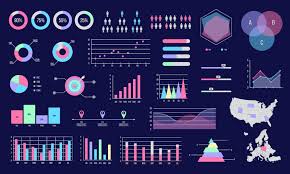
The Future of Mobile Translation Technology: Trends, Innovations & What to Expect
In an increasingly connected world, the future of mobile translation technology is more important than ever. As international travel, remote work, and global commerce expand, the demand for seamless, real-time communication across languages continues to grow. Mobile translator tools like Google Translate and Microsoft Translator have become essential, enabling users and businesses to overcome language barriers effortlessly. In this article, we’ll explore the evolution of language translation technology, the current landscape in 2025, emerging trends, the role of AI, future innovations, and what these developments mean for everyday users.
A Brief History of Mobile Translation Technology
Mobile translation began with basic text-based tools, often limited to translating individual words or short phrases. Early translation apps offered minimal context and accuracy. As smartphones advanced, features such as speech-to-text translation, image translation, and voice recognition became available. These enhancements laid the foundation for today’s AI-powered tools. Over the years, mobile translation technology evolved from rule-based systems to sophisticated AI-driven platforms capable of understanding language in a contextual and dynamic way.
Current State of Mobile Translation Tools (2025 Snapshot)
As of 2025, the top mobile translation apps—including Google Translate, Microsoft Translator, and DeepL—have revolutionized how we communicate across languages. These tools support hundreds of languages across various formats, including text, voice, and camera-based translation. Real-time conversations, handwriting input, and image scanning have become standard.
The integration of neural networks has significantly improved translation accuracy, allowing more natural and fluent outputs. Many apps also feature offline translation, enabling travelers and users in low-connectivity areas to translate content without relying on an internet connection. In short, today’s best mobile translator tools are powerful, intuitive, and accessible to users around the world.
Emerging Trends in Mobile Translation Technology
Several key trends are shaping the future of mobile translation technology:
- Real-time voice translation: Advanced AI now enables live, two-way voice translation for real-time conversations, making it easier to communicate across languages instantly.
- Offline neural machine translation: Downloadable language packs powered by AI allow users to translate text and speech without an internet connection—ideal for travel and remote environments.
- Context-aware translation: Modern apps are increasingly capable of understanding slang, idioms, and cultural nuances, resulting in more accurate and meaningful translations.
- Multilingual virtual assistants: Digital assistants like Siri and Google Assistant are evolving to support multilingual interactions, facilitating seamless voice-based translation in real-time.
These innovations are turning smartphones into intelligent, real-time interpreters that understand not just words but tone and context as well.
The Role of AI and Machine Learning
Artificial intelligence is the driving force behind today’s most advanced language translation technology. Deep learning models analyze massive datasets to deliver translations with greater fluency and context awareness than traditional rule-based systems. Unlike older statistical models, neural machine translation (NMT) processes entire sentences and adapts to linguistic structures for more accurate results.
Tech giants such as Google, Apple, and Meta continue to invest heavily in smart translation technologies, improving their platforms with every update. AI-powered translation apps now learn and improve over time, offering increasingly personalized and precise results. The continued evolution of AI in language translation is narrowing the gap between human and machine interpretation.
Future Innovations to Watch For
Looking ahead, several exciting innovations are set to redefine the future of voice translation and mobile interpretation:
- AR and smart glasses with live subtitles: Augmented reality devices will overlay real-time translations directly into the user’s field of view, transforming how we navigate foreign environments.
- ntegration with IoT and wearables: Smartwatches, earbuds, and other connected devices will deliver instant, hands-free translations for on-the-go communication.
- Emotion-detecting translation: Emerging technologies will interpret not just the content but also the tone and emotion of speech, enabling more nuanced and empathetic communication.
- Brain-computer interfaces (BCIs): While still experimental, BCIs have the potential to convert thoughts into text, pushing the boundaries of real-time, multilingual communication.
These groundbreaking innovations are moving us closer to a world where language is no longer a barrier to understanding.
Challenges and Ethical Considerations
Despite the impressive progress, mobile translation technology faces important challenges:
- Data privacy concerns: Many translation apps send user data to the cloud, raising concerns about the confidentiality and security of sensitive information.
- Bias in AI models: Machine learning systems trained on biased or limited datasets can perpetuate inaccuracies or stereotypes, especially in gendered or culturally sensitive translations.
- Impact on human translators: As AI becomes more capable, there are concerns about how it might affect professional translators. While machines excel at basic translation tasks, human translators remain essential for interpreting cultural nuance, tone, and intent.
Addressing these issues requires transparency, responsible AI development, and an ongoing focus on ethical innovation.
What This Means for Businesses and Travelers
For businesses, mobile translation tools offer a competitive edge by enabling effective communication with international customers and partners. Industries such as travel, hospitality, e-commerce, education, and healthcare benefit immensely from real-time multilingual support and localization. From translating product descriptions to offering live chat support in multiple languages, the possibilities are vast.
For travelers, mobile translators provide the freedom to explore new destinations with confidence—reading menus, navigating public transport, and conversing with locals becomes easier and more enriching. These tools are unlocking global experiences in ways that were once unimaginable.
Conclusion: A Multilingual Future Within Reach
The future of mobile translation technology is smart, accessible, and constantly evolving. With innovations in AI, real-time voice translation, and wearable integration, seamless cross-language communication is becoming a reality. Businesses and individuals who embrace these tools now will be better positioned in a truly globalized world.
Stay connected with us on HERE AND NOW AI & on

